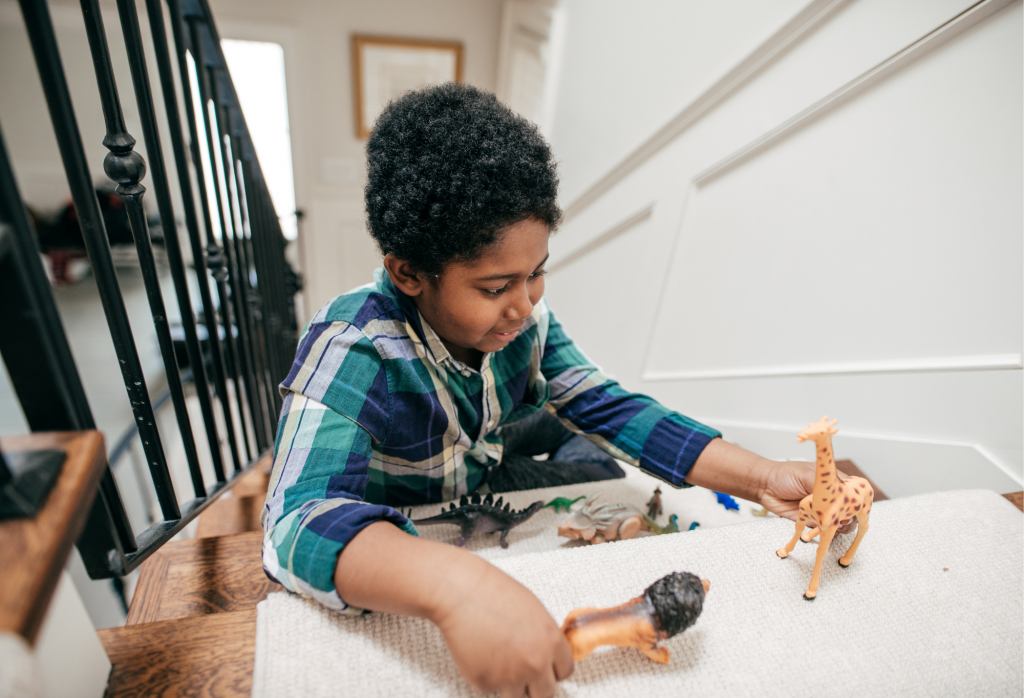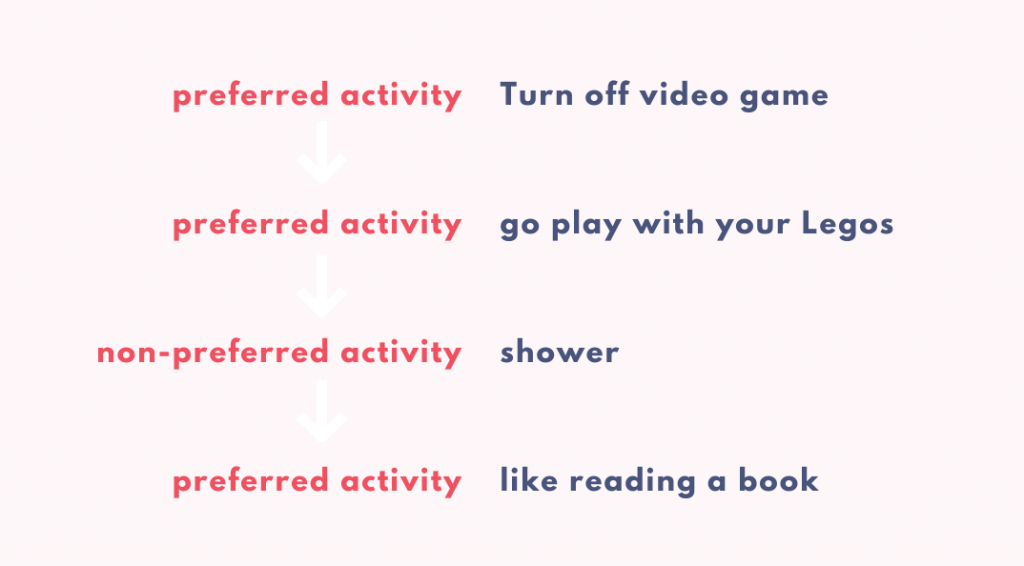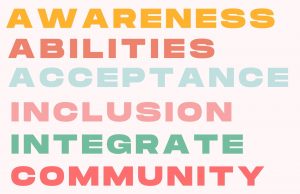Transitions are not always so simple. Compounded by the fact that parents are pressed for time to get routines completed, this can turn into a tantrum-meltdown disaster. The more tools you have in your “parent toolbox” the more seamless you can transition kids throughout the day.
Why are transitions so difficult for children?
- Most likely than not, you are asking them to go from a preferred to non preferred activity! Ex: A motivating activity like watching TV to a non-preferred task like taking a shower.
2. Children need to feel in control. This is especially true for autistic children who can become overwhelmed with change and therefore very resistant to transitioning to the unknown. They can appear to be rigid and in need for control however this comes from the anxiety they get from the unknown.
3. Your child may not have the skill set to complete what you are asking of them. They know what you want but the demand is either too big or they don’t know how to break it down to get started.
Following through with routines easily and seamlessly is one of the biggest challenges for many parents. Kids will wait until we yell to know that we mean business! It doesn’t have to be so challenging! Here are several ways to help your child transition easily through morning or evening routines. You can also use these strategies to come to the rescue when you need your child to transition out of something captivating that they’re doing (like electronics)!!!!
1. Use checklists:
Checklists are great to help a child know what comes next and keep track of whether they’ve completed. It’s also a great way to provide structure and sequence during complex tasks. For ex: when we ask children to clean up their rooms they may A-resist because the task appears too big or B-they may not even know where to start and how to complete this task that includes so many steps.
Help them by creating a checklist! Ex: put away books, pick up trash, and make the bed etc.
2. Choice of Two:
Choices are an amazing way to help children transition. They perceive control when provided with choices and they also get the opportunity to learn how to make a choice. One of the easiest ways to use choices for transitions is to say “would you like to take a bath in five minutes or in 10 minutes?“.
3. First/Then Cards:
We use this wonderful visual tool and therapy sessions especially with young children or children with limited verbal skills. Keep in mind that the least language you use during transitions the better. Ex: instead of saying “we can’t watch TV right now, you first have to take a bath” (all your child heard is you can’t watch TV… thus setting up a tantrum)say “first bath, then TV“ (and show visual).
4. Sing Songs:
Sinking songs for transitions is not only fun but also a light way to help children transition. This especially works with young children. Ex: clean up songs, bath the songs etc.
5. Use a Visual Schedule:
This is like a checklist with visuals of the activities in your child’s day. Teach children to check in with their schedules when they complete an activity and also to check when they want to know what comes next in their day.
Visual schedules are especially useful for children who have difficulty with self-regulation. Since the challenge for them is to regulate from the inside out, a schedule helps them anticipate to calm or awaken their bodies depending on what comes next.
For instance, a child that is doing a nonpreferred activity such as homework is more likely to “keep it together” a little longer knowing that next on the schedule is the opportunity for outdoor play and movement.

6. Give your child Advance Notice:
There’s nothing more frustrating to your child than to interrupt them during something they love to do and say stop now!
Ex: “turn off your video game now!” (disaster awaits!) Give your child advance notice: “You can play video games for 30 minutes and I’ll come to let you know 5 minutes before that it will be time to stop.“ This is also efficient when you use it in combination with our next strategy…a timer!
7. Use a timer (or hour glass):
Use a timer to let a child know:
- How long they have left before you will ask them to stop what they are doing.
- Put a timer during nonpreferred activities like homework and tell them when the timer goes off they can have a break.
Have children set their own timer so they feel more in control.
8. Use Incentives to motivate them:
Let’s be real, no child would jump from happiness to transition from electronics to getting into bed or coming to the dinner table. Help them transition by using incentives for example the faster you finish homework the more time you get for free play before bed you can also transition from preferred to nonpreferred activity by throwing in another prefer task after its completion for example finish your homework nonpreferred and take a bath nonpreferred so you have extra time after that to play with your Legos preferred.
For children who are extremely resistant to transitions. (I see this a lot with children addicted to electronics), help them out of this activity by transitioning them first to another preferred activity. Ex: Turn off video game (preferred activity) and go play with your Legos (another preferred activity). You then add the next transition to the non-preferred task (like taking a shower) to yet another preferred task (like reading a book).

9. Use Transition Items:
Allow children to bring something with them to help them with transitions. Ex: “go pick a toy that you want to play with in the bathtub” or “pick a book for bedtime”.
Always have a plan but be mindful to surrender to the as is moment with your child. Breath and enjoy!





